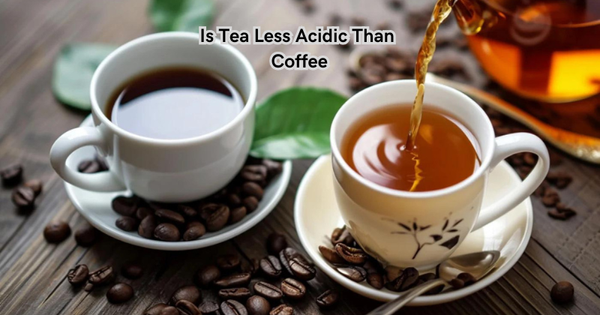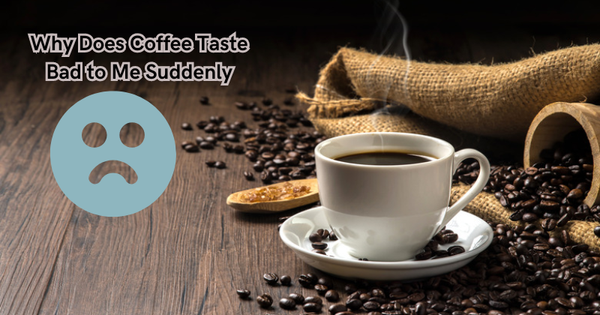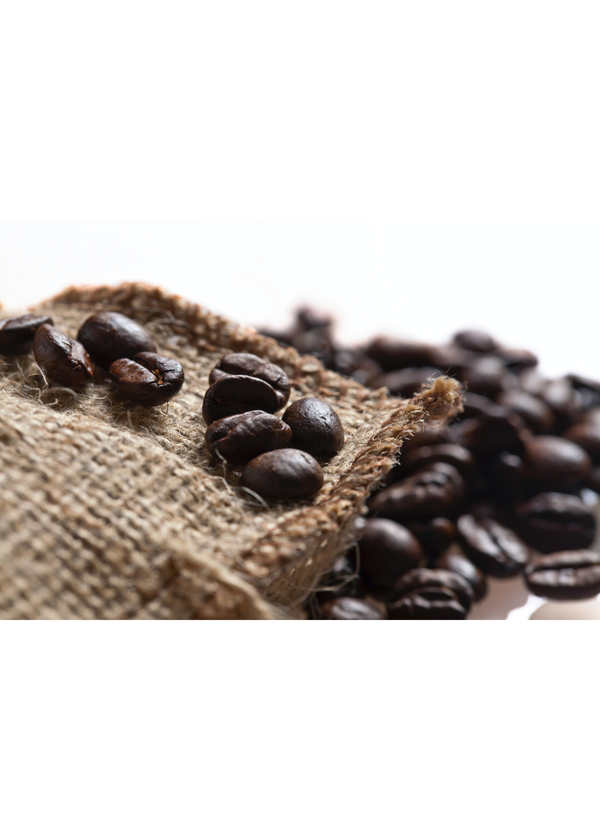For enthusiasts of rich, aromatic coffee, the percolator stands as a timeless icon of brewing tradition.
However, achieving the perfect brew hinges not only on the quality of the beans and the water but also on the precise measurement of coffee grounds. Determining the ideal quantity of coffee to use in a percolator is crucial to unlocking its full flavor potential.
In this guide, we delve into the art and science of percolator coffee brewing, exploring the factors that influence the coffee-to-water ratio and unveiling insights to help you achieve that impeccable balance.
Let's embark on a journey to master the alchemy of percolator coffee—an endeavor that promises to elevate your coffee experience to new heights.
What Is a Coffee Percolator?
Before we dive into the specific measurements for brewing coffee in a percolator, let's first understand what a percolator actually is.
A coffee percolator is a type of pot or kettle used for brewing coffee by cycling boiling water through the coffee grounds multiple times until it reaches the desired strength and flavor.
Stovetop percolator pots have been a popular method of coffee brewing since the 19th century, and electric percolators became commonplace in American households during the mid-20th century.
Percolators have been around for centuries and were once the most popular method of brewing coffee. However, with the introduction of more advanced and efficient brewing methods, percolators have taken a backseat in recent years.
Despite this, many coffee aficionados still swear by their trusty percolator for producing a bold and full-bodied cup of joe. Percolated coffee is known for its strong flavor and rich aroma, making it a favorite among those who enjoy a bolder and richer coffee experience.
How Does a Percolator Work?
To understand the coffee-to-water ratio in a percolator, it's important to know how a percolator works.
The process begins by filling the bottom chamber of the percolator with cold water and placing coffee grounds in the top chamber or basket.
As the water heats up on the stovetop or through an electric heating element, steam pressure builds up in the bottom chamber and forces the hot water up through a tube, over the coffee grounds, and back down into the bottom chamber.
This cycle continues until the desired strength is achieved. The longer the process goes on, the stronger and more bitter the coffee will become. Brewing coffee in a percolator requires careful timing and precision to achieve the perfect balance of flavor.
How Much Coffee to Use in Percolator
As mentioned earlier, determining the perfect coffee-to-water ratio is crucial for achieving a delicious cup of percolator coffee.
But how much coffee should you actually use? The general rule of thumb is to use one tablespoon of ground coffee for every six ounces of water. This will result in a medium-strength brew that is not too weak or too strong.
However, there are a few factors that can affect this ratio and may require some adjustments. These include the type of coffee beans, the grind size, water quality, and personal taste preferences.
- Type of Coffee Beans: Different types of coffee beans have varying levels of density and oil content, which can impact the intensity and flavor of the resulting brew. For example, lighter roasts tend to have a higher caffeine content but may require more grounds to achieve the desired flavor, while dark roasts are more dense and may require less coffee.
- Grind Size: The grind size of the coffee beans also plays a role in the strength of the brew. A finer grind will extract more flavor and strength from the coffee, while a coarser grind will result in a weaker brew.
- Water Quality: The quality of water used in brewing can also affect the taste and strength of the coffee. Hard water with higher mineral content may require more grounds to balance out the flavors, while soft or filtered water may need less.
- Personal Taste Preferences: Ultimately, everyone has their own unique preference for how strongly they like their coffee. Some may prefer a bolder and stronger brew, while others may prefer a milder flavor. Experimenting with different ratios and adjusting based on personal taste is key to finding the perfect balance.
Coffee maker manufacturers may also provide specific recommendations for coffee-to-water ratios based on their percolator models, so be sure to check the user guide for additional guidance.
Tips for Perfecting Your Percolator Coffee
Now that you know how much coffee to use in a percolator, here are some other tips and tricks to help you achieve the perfect cup of coffee:
- Always use freshly ground coffee for the best flavor and aroma.
- Preheat your percolator before brewing to ensure an even extraction of flavor.
- Avoid boiling the coffee, as it can lead to a bitter taste. Keep the heat at a simmer or low boil.
- Use a timer to keep track of the brewing process and remove the percolator from heat once the desired strength is achieved.
- Clean your percolator regularly to remove any buildup of oils or residue that can affect the taste of your coffee.
The Importance of Coffee-to-Water Ratio
The foundation of a good cup of coffee is the ratio of coffee grounds to water. This balance determines the strength and flavor profile of the final brew.
When it comes to percolator brewing, getting this ratio right is crucial as it directly affects the taste and aroma experience.
Too little coffee will result in a weak, underwhelming cup, while too much will produce a bitter and overpowering brew. Brew coffee with confidence by mastering the coffee-to-water ratio in your percolator and taste the difference in every sip.
By understanding the factors that influence this ratio and adjusting accordingly, you can achieve a perfectly balanced cup of percolator coffee every time.
So, next time you reach for your trusty percolator, remember to pay attention to the coffee-to-water ratio for a delicious and satisfying coffee experience.
How to Make Coffee in a Percolator
Now that we've covered the basics of percolator brewing and the importance of the coffee-to-water ratio let's look at a simple step-by-step guide on how to make coffee in a percolator:
Ingredients:
- Coarsely ground coffee
- Filtered or bottled water
Instructions:
- Begin by filling the bottom chamber of the percolator with cold water based on the amount of coffee you want to make.
- Place the coffee grounds basket on top and fill it with the desired amount of coffee grounds, following the recommended ratio of one tablespoon for every six ounces of water.
- Assemble the percolator according to the manufacturer's instructions and place it on a stovetop, or plug it in if you have an electric percolator.
- Turn on the heat and wait for the water to come to a boil. As steam pressure builds up, hot water will be forced through the coffee grounds and into the top chamber.
- Keep a close eye on the percolator and listen for the characteristic bubbling sound, signaling that the coffee is brewing.
- Once the desired strength is achieved, remove the percolator from heat and serve your freshly brewed coffee.
- Enjoy your delicious cup of percolated coffee.
Good coffee takes time and precision, but with a little practice and attention to detail, you can master the art of percolator brewing and create a perfect cup every time. Stovetop percolator coffee is a nostalgic and classic way to enjoy your coffee, so take the time to savor each sip and appreciate the flavors that come with it.
What are the Steps for Cleaning a Percolator?
Proper maintenance and cleaning of your percolator are crucial for achieving the best-tasting coffee. Here are some simple steps to keep your percolator in top shape:
- After each use, remove all the parts of the percolator and rinse them with hot water.
- Use a mild dish soap and a non-abrasive sponge or brush to clean the inside and outside of the percolator.
- Pay close attention to any areas with buildup or residue, and gently scrub them until they are clean.
- Rinse all parts thoroughly with hot water and make sure there is no soap residue left behind.
- Dry all parts completely before reassembling your percolator for storage.
Percolator vs. Other Brewing Methods
While percolators were once the go-to method for brewing coffee, they have since been overshadowed by more modern and advanced methods such as drip machines, French presses, and pour-over techniques.
Glass percolator coffee pots may even be considered outdated by some, but they still have their loyal fan base for a reason. So, how does percolator coffee compare to these other methods?
- Drip Machines: Drip machines use a similar process of hot water passing through coffee grounds, but the major difference lies in the filter used. Drip coffee is filtered through paper, while percolator coffee retains the oils and fuller flavor profile. Percolator coffee makers are also more compact and portable, making them a popular choice for camping or outdoor use.
- French Press: French press brewing involves steeping coarsely ground coffee in hot water before pressing down a plunger to separate the grounds from the liquid. This method produces a fuller-bodied and richer cup compared to percolators.
- Pour-Over Techniques: Pour-over brewing involves slowly pouring hot water over coffee grounds, allowing for more precise control over the brewing process. This method creates a clean and nuanced cup of coffee but requires more time and effort compared to percolators.
Despite the advancements in other brewing methods, many coffee aficionados still prefer the strong and bold flavor of percolator coffee. Coffee with a percolator may not be for everyone, but for those who appreciate a full-bodied and traditional cup of joe, it remains a timeless choice.
FAQs
Why did people stop using percolators?
Percolators fell out of popularity due to the rise of more convenient and efficient brewing methods. Drip machines, French presses, and pour-over techniques are quicker and easier to use, making them more practical for everyday use.
How do you know when percolator coffee is done?
You can tell that percolator coffee is done by listening for the characteristic bubbling sound and checking the color of the coffee. You can also perform a taste test to see if it has reached your desired strength.
What is the disadvantage of a percolator?
One of the main disadvantages of percolators is that they can over-extract coffee, resulting in a bitter taste. This is why it's important to carefully monitor the brewing process and remove the percolator from heat once your desired strength is achieved.
Conclusion
Mastering the art of brewing coffee in a percolator hinges on the delicate balance of the coffee-to-water ratio.
By understanding the nuances of this ratio, one can unlock the full spectrum of flavors and aromas inherent in the coffee beans. Navigating through the complexities of this process empowers enthusiasts to tailor their brews to personal preferences, whether it's a robust and full-bodied concoction or a milder, more delicate infusion.
Embracing the journey of experimentation and discovery within the realm of percolator brewing promises to elevate the coffee experience to new heights.
With the right knowledge and technique, every cup brewed in a percolator becomes a testament to the craftsmanship and an invitation to savour the symphony of flavours that coffee has to offer.







